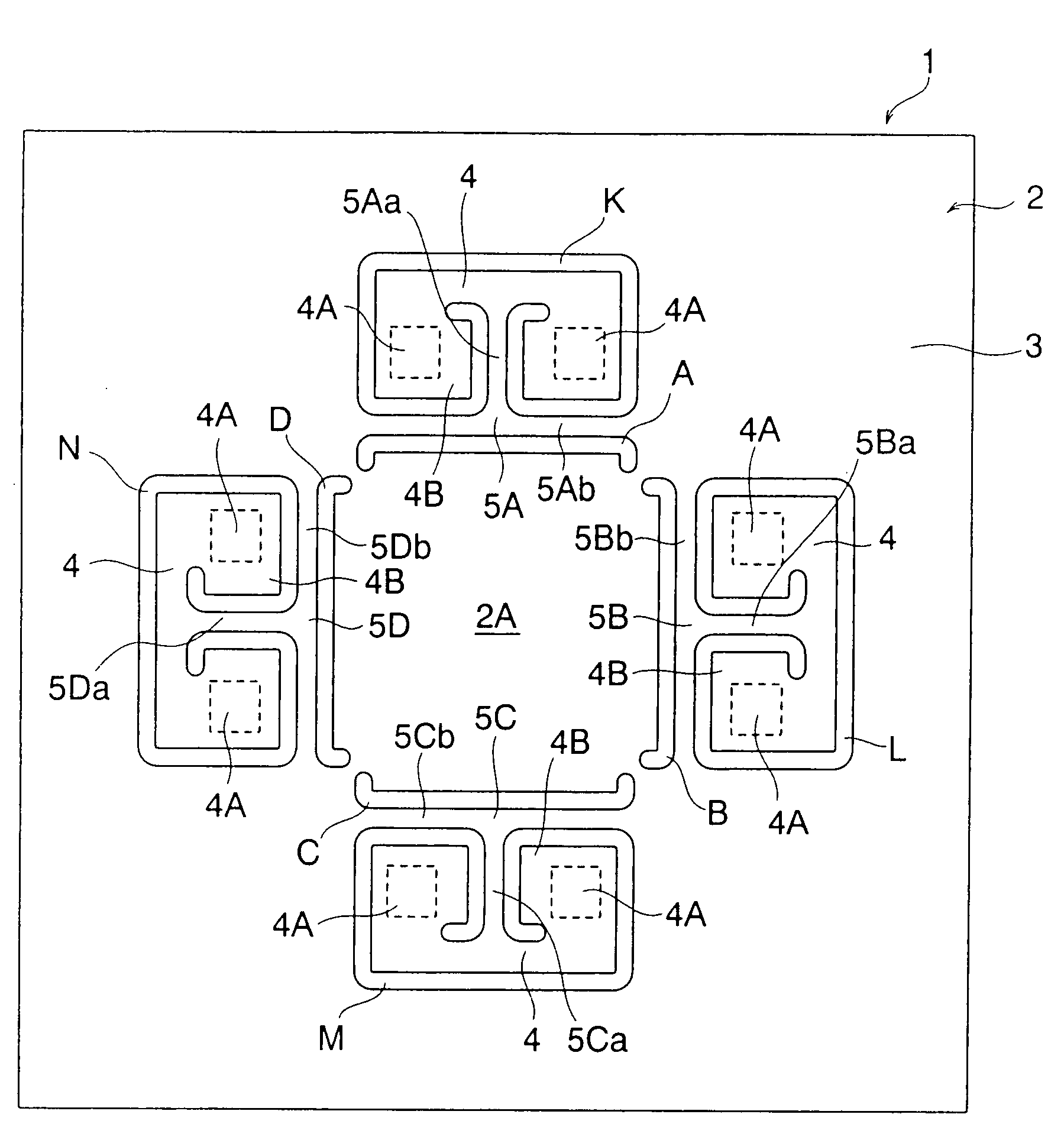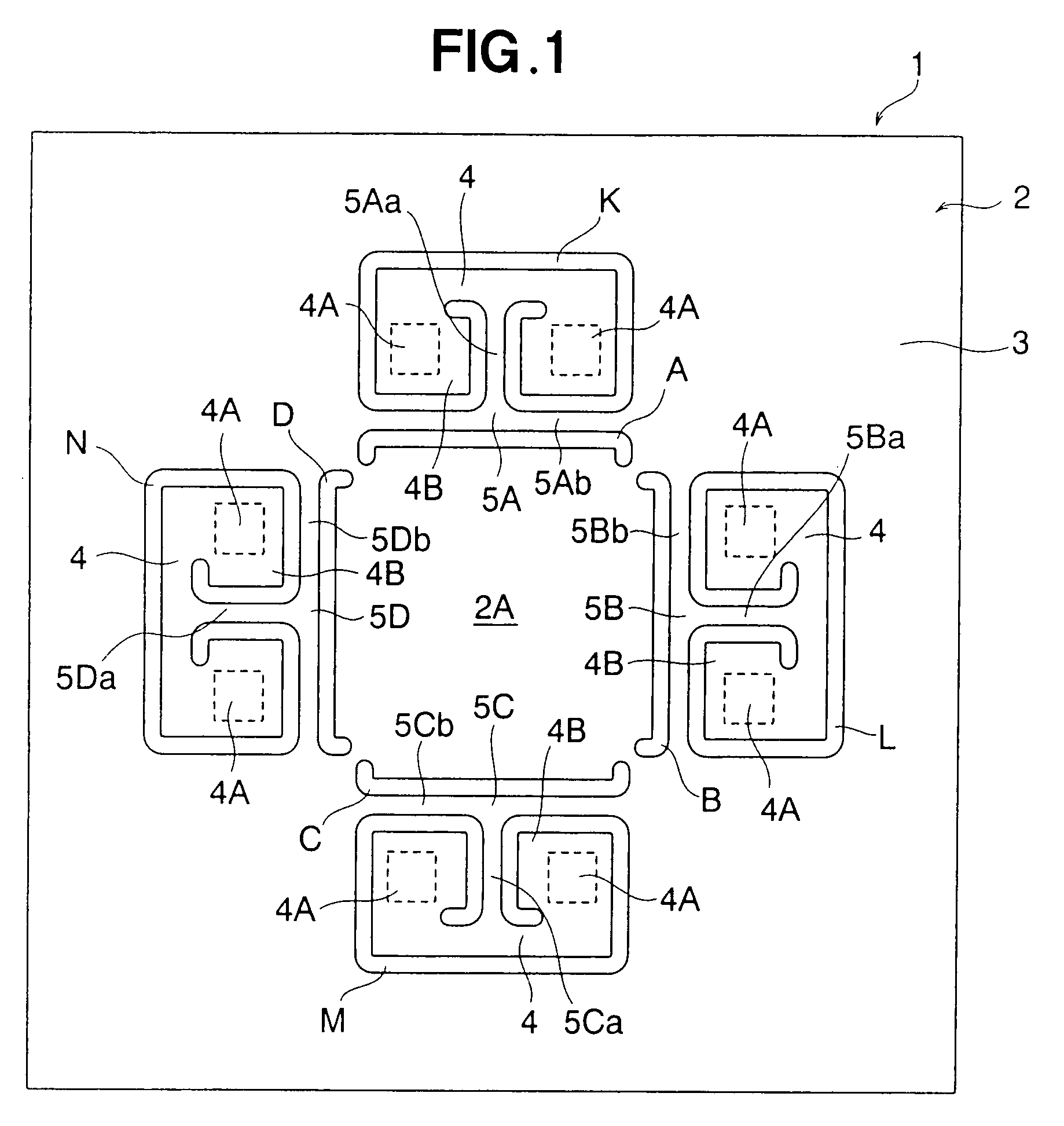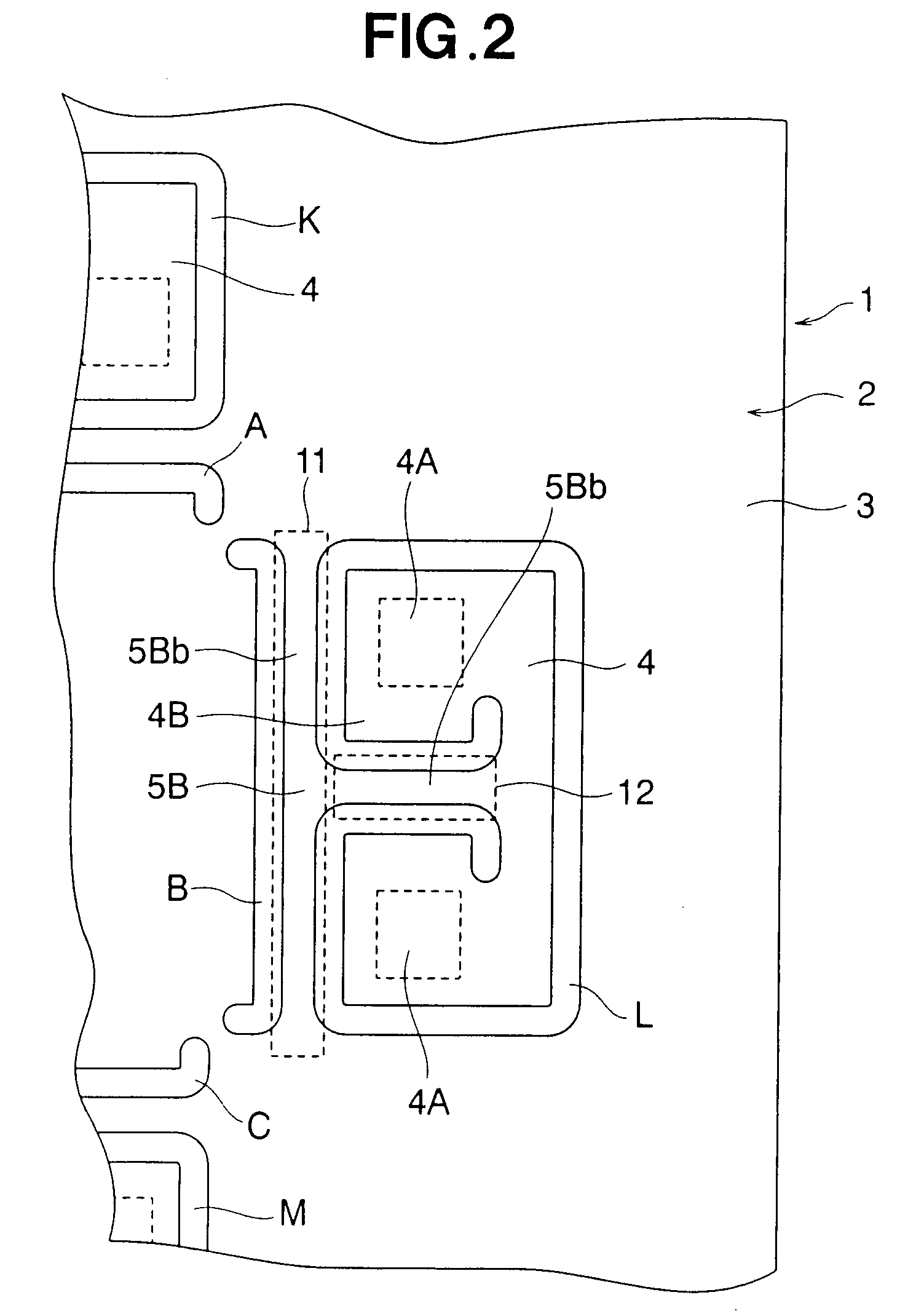Force sensor chip
a technology of force sensor and sensor chip, which is applied in the direction of force/torque/work measurement apparatus, instruments, and measurement of tension, etc., can solve the problems of considerable limitation in design freedom of disclosed six-axis force sensors, and the inability to ignore inter-axis interference problems, so as to achieve significant enhancement of the design freedom of the sensor chip and the ability to prevent the concentration of stress
- Summary
- Abstract
- Description
- Claims
- Application Information
AI Technical Summary
Benefits of technology
Problems solved by technology
Method used
Image
Examples
Embodiment Construction
[0030]Now, with reference to FIGS. 1-10, a description will be given about a force sensor chip in accordance with a first embodiment of the present invention. The instant embodiment of the force sensor chip will be described hereinbelow as being in the form of a six-axis force sensor chip, although the present invention is not limited to a six-axis force sensor chip.
[0031]FIG. 1 is a plan view showing one surface (i.e., front surface) of the force sensor chip 1, and FIG. 2 shows in enlarged scale characteristic sections in FIG. 1. In FIGS. 1 and 2, there is only shown a planer shape of a base member (in this case, semiconductor substrate) 2 with illustration of strain resistance elements and wiring patterns omitted. FIG. 3 shows twelve strain resistance elements and some of electric wiring patterns and electrode pads provided on the semiconductor substrate 2 of the force sensor chip. FIG. 4 is a view, similar to FIG. 2, which shows in enlarged scale principal or relevant sections of...
PUM
 Login to View More
Login to View More Abstract
Description
Claims
Application Information
 Login to View More
Login to View More - Generate Ideas
- Intellectual Property
- Life Sciences
- Materials
- Tech Scout
- Unparalleled Data Quality
- Higher Quality Content
- 60% Fewer Hallucinations
Browse by: Latest US Patents, China's latest patents, Technical Efficacy Thesaurus, Application Domain, Technology Topic, Popular Technical Reports.
© 2025 PatSnap. All rights reserved.Legal|Privacy policy|Modern Slavery Act Transparency Statement|Sitemap|About US| Contact US: help@patsnap.com



